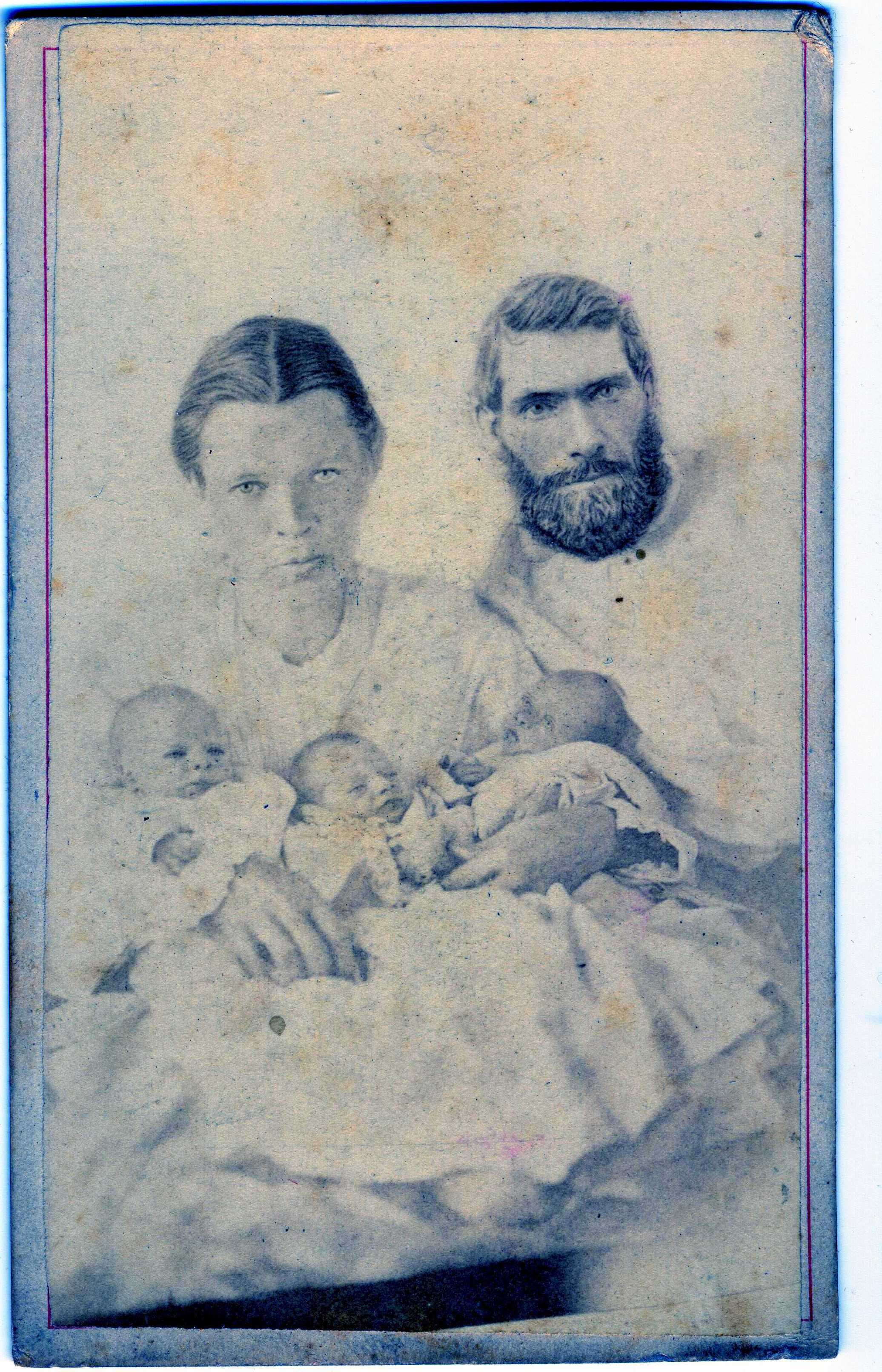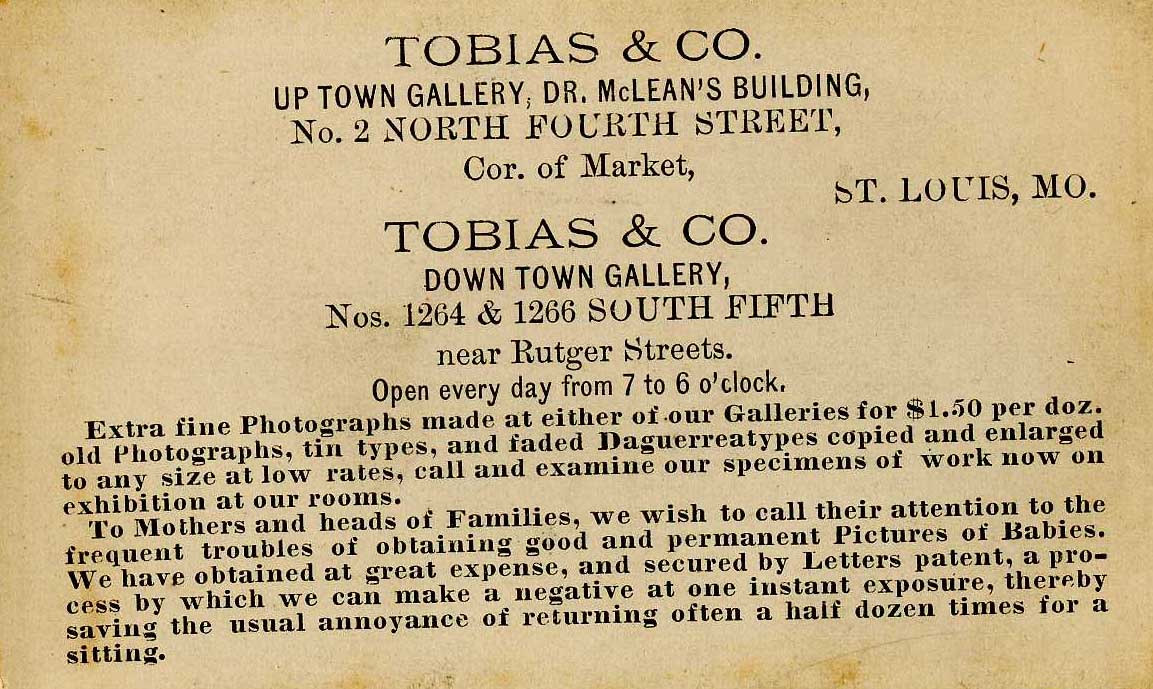Sign up for the Family Tree Newsletter! Plus, you’ll receive our 10 Essential Genealogy Research Forms PDF as a special thank you.
Get Your Free Genealogy Forms
"*" indicates required fields
Last week I featured Judy Linnebach’s picture of a 19th-century couple and their triplets. If you have a photo of a pre-1900 set of triplets, I’d love to post it in this space. Just about everyone who commented mentioned a multiple birth in their family. I can’t wait to see the photos—you can e-mail them to me.
Here’s the rest of the story about Judy’s photo.
When she wrote to me, she asked if this could be John Basilius Boll, his wife Barbara Platzer Boll and their children. According to her research, the couple married in 1879 and had two children before they had a set of twins in 1883. Is it possible that one of the triplets died and the death went unrecorded? Let’s examine the evidence.
The picture is a card photograph measuring 2.5×4 inches. It’s the size of a carte de visite. These small card photos were first introduced into the United States in 1859 and remained popular for decades. The thin red line border was first common in the late 1860s.
Tobias and Co. took this photo. On the back of the image is the name of the company and key details about their location and practice.
What I find interesting is the first sentence of the second paragraph: “To Mothers and heads of Families, we wish to call their attention to the frequent trouble of obtaining good and permanent Pictures of Babies.” Tobias & Co. had a patented process to guarantee success.
To locate more information on Tobias, I contacted the St. Louis Public Library and spoke with librarians in both the local history collection and in fine arts. The company appeared in 1878 and later city directories, but by the mid-1880s Henry Tobias was a printer. It was unclear from census data if this was the same man who ran the photo studio.
This photo was found in a Bible once owned by Judy’s father’s maternal grandmother, Lena Wilhelms. Given that it wasn’t directly connected to the Boll family, I asked Judy to research all the branches of the family to see if there was another multiple birth. Last week, we learned that multiple births were hereditary, so it’s quite possible that this could depict someone else in her family. No luck!
There was another possibility though: Lena’s daughter Emma was a genealogist and collected information on the Boll family. It’s likely that she placed the pictures in the Bible for safe-keeping.
The clothing clues in this picture are fascinating. The husband wears a simple work shirt (the Bolls were farmers). The wife’s dress is barely visible except for a plain neckline and lace-trimmed cuffs. My grandmother always wore a “house dress” when she was home, and I wondered if the same wasn’t true in the 1880s. While this woman’s dress isn’t the current 1880s dress that you see if fashion encyclopedias, there was a wide variety of dresses for women.
In the 1880s, a new style of dress became popular for pregnant women. It was called a Mother Hubbard. Loose-fitting and comfortable, these cotton dresses could be made with a pattern available from a catalog. The mother in this photo had likely just given birth—these are very small infants. With three babies to breast-feed, a comfortable dress like a Mother Hubbard would be perfect attire. They often featured trim at the cuffs, just like you see here.
They were so comfy that many other women wore them belted in summer to stay cool. It was a controversial choice. In the Oct. 26, 1884, New York Times, an article titled, “The Mother Hubbard in Chicago” talked about variations of the dress being worn by women in one neighborhood and how one particular woman had been arrested for it. It ended on a reassuring note: “Ladies who wear Mother Hubbard dresses on the street need not be alarmed. There is no ordinance in Chicago against the wearing of them, although such an ordinance is in vogue in the town of Morris, Ill.”
According to Joan Severa in Dressed for the Photographer: Ordinary Americans & Fashion, 1840-1900 (Kent State University Press), these dresses were meant for indoor use. They were house dresses, not to be worn outdoors.
So could this picture depict the Bolls and their children in 1883? The evidence is conflicting.
- In late December 1883, the Bolls had twin boys baptized—Charles and George.
- In the 1900 census, the family is listed except for George. I have to double-check with Judy on his whereabouts. When asked, Barbara said she’d given birth to six children but that only five were still living. Could this refer to a deceased George? There were five children currently living with the parents. Why not mention another child if one of the triplets died?
- Could another multiple birth in the family have gone unrecorded? It’s possible.
Right now it appears that this photo documents the Boll family.
- The mother’s dress dates from the 1880s.
- The photographer could still be taking images in his printing business (if, of course, it’s the same man)
- There are no other documented multiple births in the family.
- Judy has one documented multiple birth—the twin boys.
If this is the Bolls and their babies, then one of these triplets is likely deceased. This was a complicated case.
It’s a haunting image. Next week I’ll be back with some other unusual pictures from Judy’s family!






